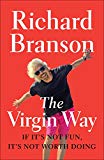Recommended Resource

Productivity or People? It’s a Balance Board, Not a Teeter-Totter

One of the basic ways people tend to define organizational culture rests on a dichotomy between two perceived opposites.
- Productivity-based cultures focus on efficiency. They work on maximizing return on investment by getting products and services out the door.
Many big industrial companies and financial services firms fall into this camp. So do many compliance-heavy organizations, like the local law enforcement agency we’ve been working with; their version of providing value is enforcing rules and meeting standards. - People-based cultures focus on relationships. They work on taking care of customers, employees, and other stakeholders. As Richard Branson famously said, “If you take care of your employees, they’ll take care of the clients.”
Service providers tend to fall into this camp — airlines, for example, or healthcare organizations. Most nonprofit organizations and some government agencies also tend to be people-based.
Many leaders see these two orientations as mutually exclusive. They try to stick to one orientation or the other — with effects that serve no one well. We’ve seen many examples of companies that crashed and burned because they focused solely on profit to the exclusion of everything — and everyone — else. (Think Enron, Lehman, and every bank that’s “too big to fail.”)
Meanwhile, organizations that focus primarily on people often don’t do a good job of holding employees accountable for getting things done. Employees get away with absenteeism, missed deadlines, and unfinished projects. The problem becomes a crisis when, for example, a client or funder complains because they didn’t get the output they were expecting. Then a manager or line employee gets fired — when the real culprit just may be the organizational culture.
Many companies, then, seesaw back and forth between these two extremes.
- They focus on productivity until they have a people problem. Then the productivity side of the dichotomy goes down while the people side goes up.
- Unless they’re intentional about how to “do people” right, they just get all campfire-and-Kumbaya for a while. Productivity suffers because no one has thought through how to empower people to do their best work. Then the people side of the teeter-totter goes down while the productivity side goes up.
- And so on.
Leaders who create culture on purpose live on a balance board instead of a teeter-totter. They find the right balance between productivity and people for their organization, with these people, at this time, in this climate. They constantly adjust the balance in response to changing conditions.
If we had our way, we’d start every organization—for-profit or non-, product or service providers, large or small—at a 50/50 balance between productivity and people.
But the fact is that the right balance has to emerge from each leader and each team. What we can do is to give you the tools and skills to help you find the right balance for you.
What you can do today: Take stock of the orientation of your team. Productivity or people—or both? What evidence can you give for your assessment?
Questions for discussion: What’s your take on the primary causes of corporate collapses and scandals? Is there more to it than too much focus on productivity at the expense of people? How have you changed the way you lead in response to these problems?

